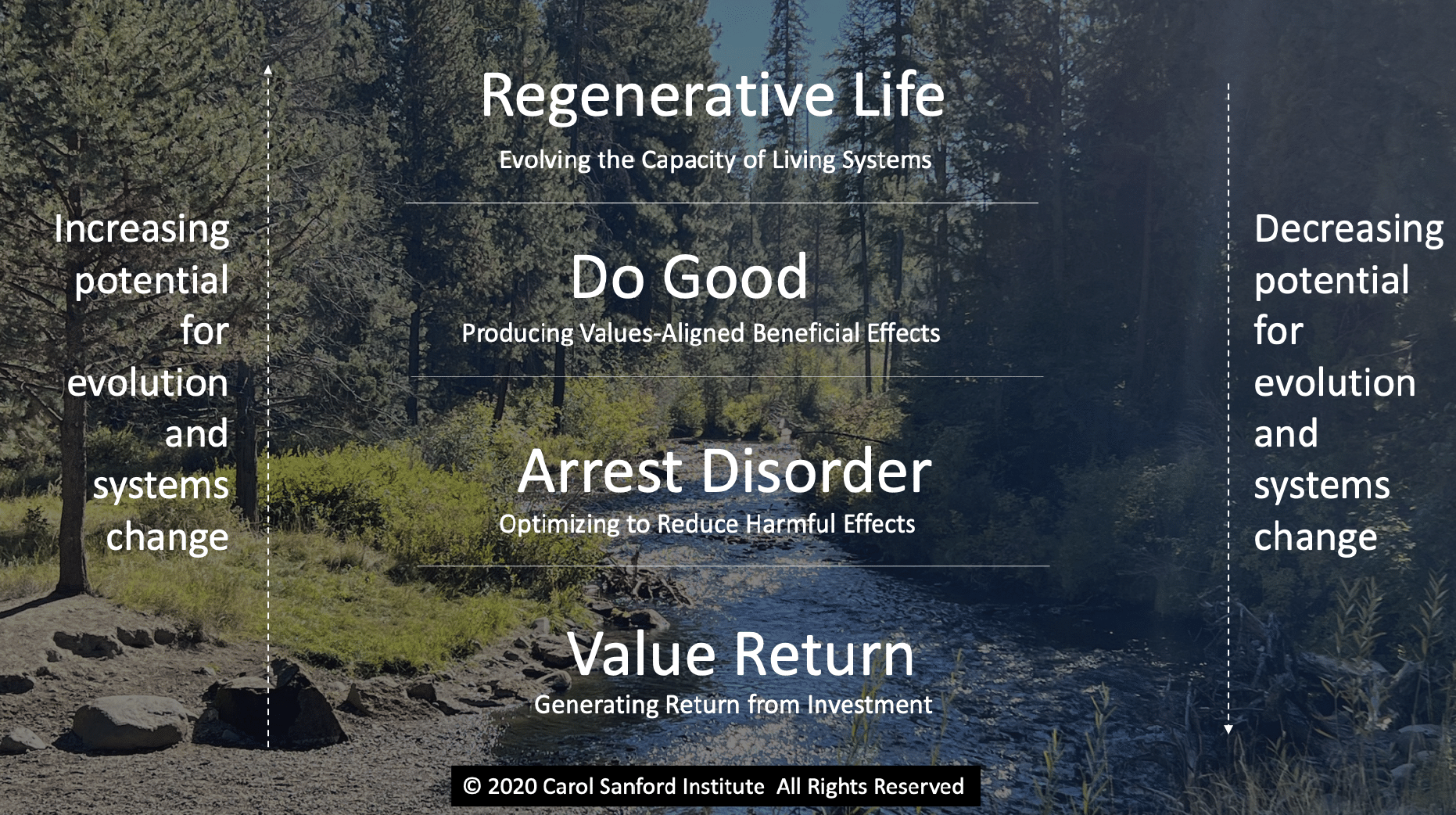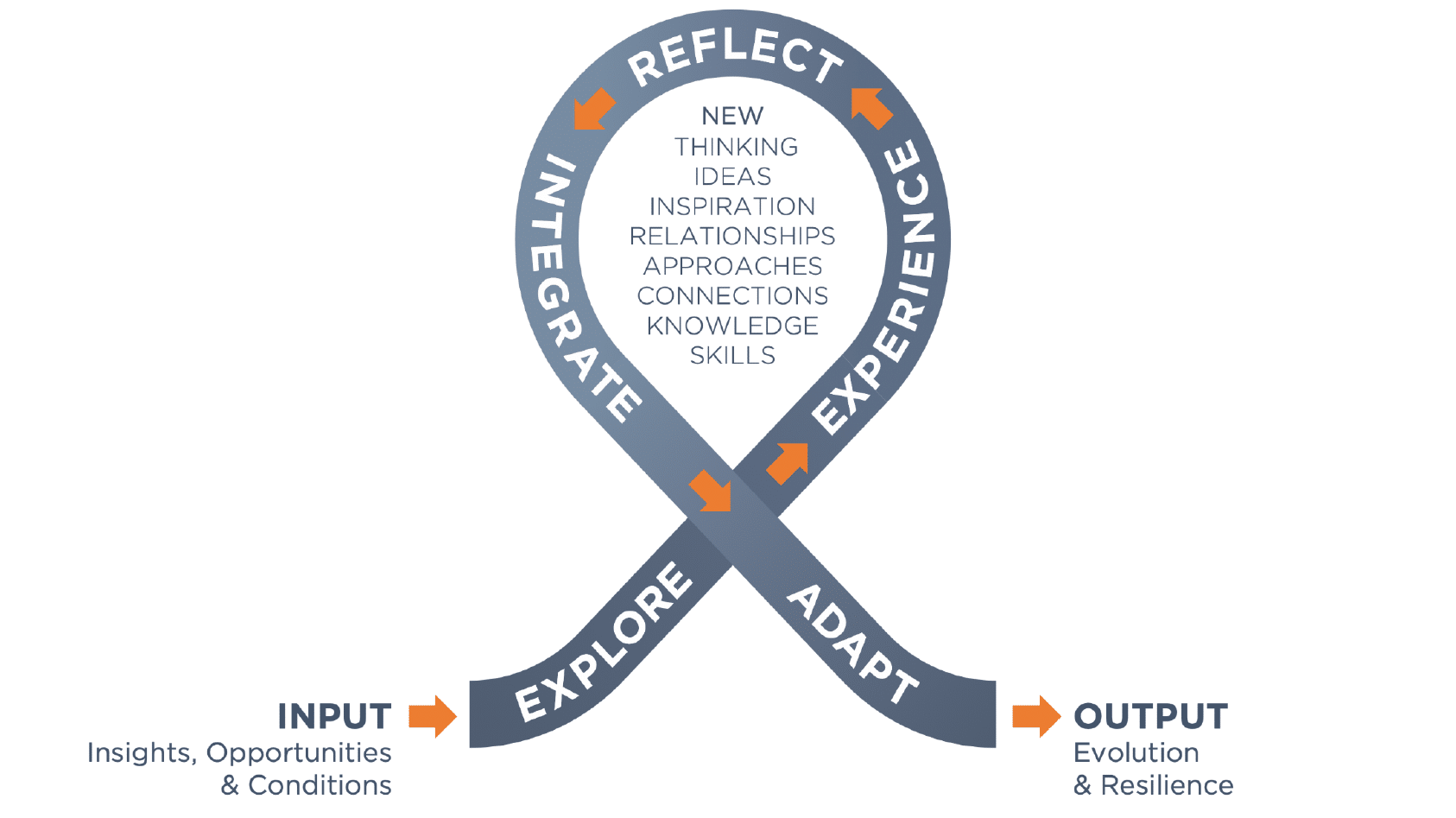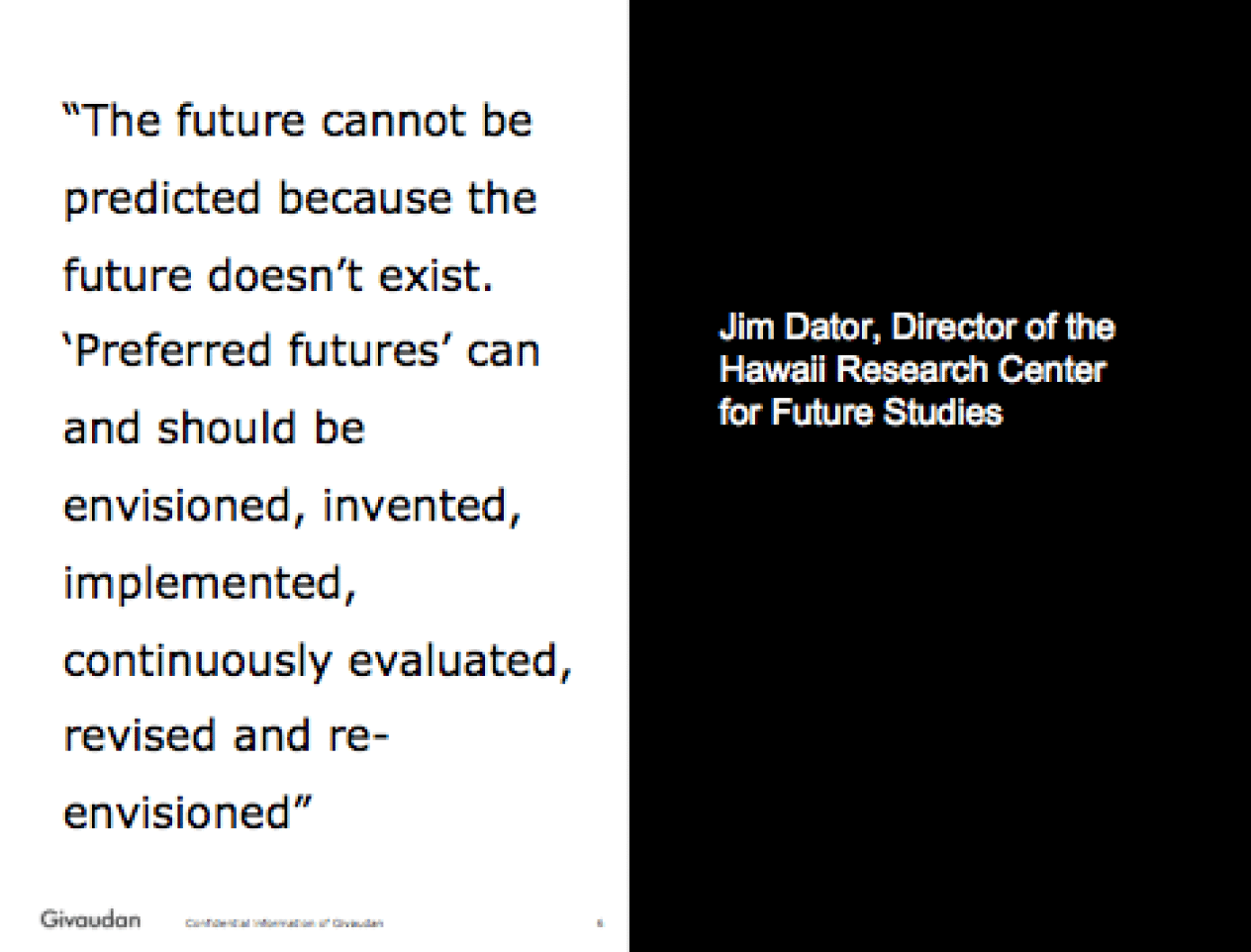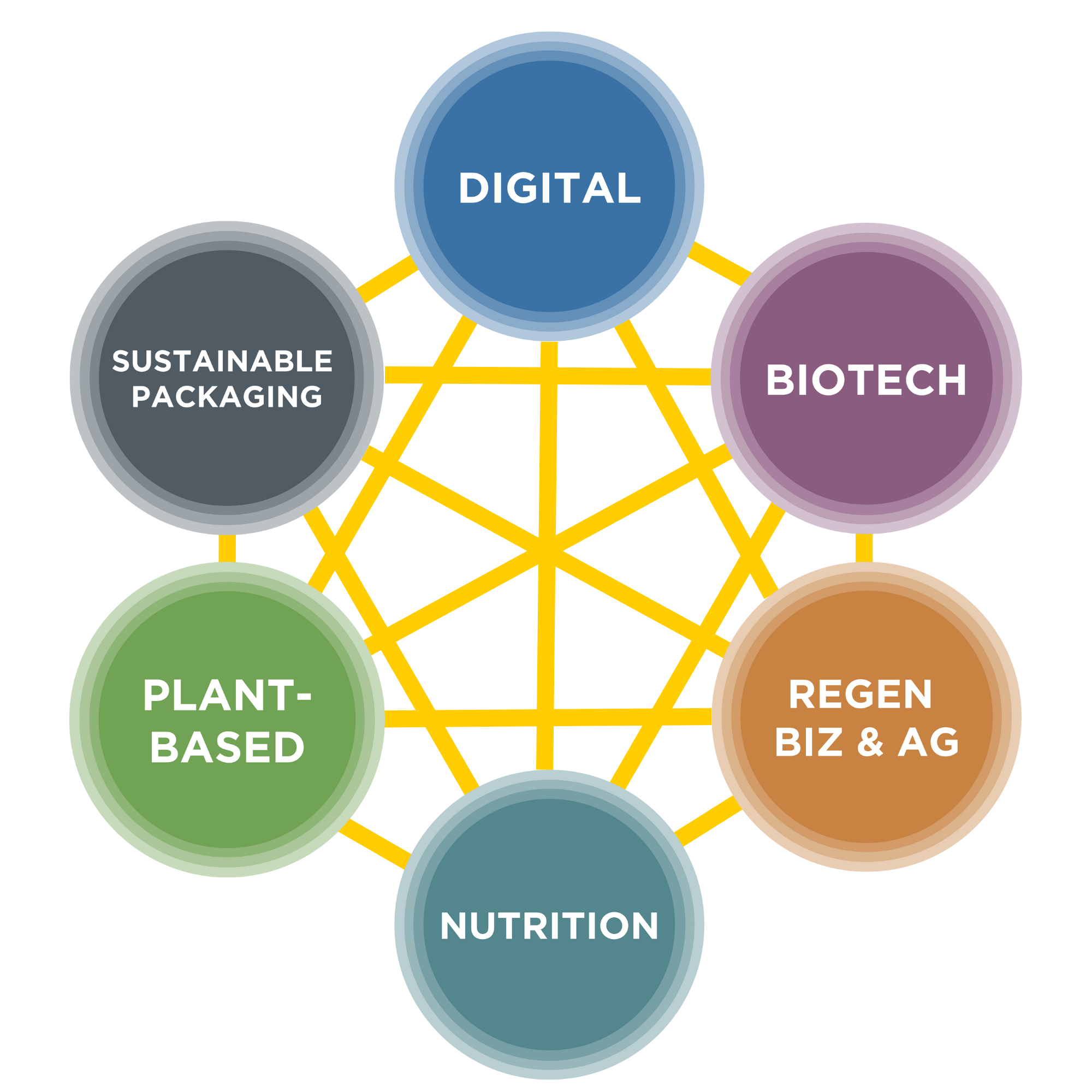What is your Return on Innovation? How do you measure the return on your investment in innovation? Is it based solely on near-term value return or is there a longer term view based on building capacity, experiences and regenerative thinking?
We are often asked “what is the return on investment” for being a MISTA Member?
Distilling the value of any investment in innovation, culture, mindset, or ways-of-working to a simple, mechanistic value misses the strategic importance and systemic value of evolving people, teams, and companies.
At MISTA, we define innovation as:
Creating mindset, culture, and ways of working that enable a system (company or ecosystem) to continuously evolve and adapt to changing conditions and opportunities, manifesting in the creation of new futures.
When innovation is seen as a ‘variable cost’ with the sole purpose of generating a return on investment, we are operating from a value return paradigm that limits people, teams, and companies from evolving to new paradigms (see figure 1 below from the Carol Sanford Institute). Investments in innovation should focus on the highest level order possible and increase the potential for evolution and systems change.

Of course, not all investments in innovation are created equal and the regenerative value of these investments should be evaluated, but how do we measure this? Applying simplistic, linear, financial models to a complex, adaptive process is not the answer.
Most of us have heard the expression, experience matters… this is true for sports figures who are on top of their game as well as leaders in business who have experiences (positive and negative) to help them navigate the unknown. These experiences can not be copied and pasted to predict the future, but rather these experiences help shape and inform what is possible to help create new futures.
As the futurist Alvin Toffler wrote: “The illiterate of the 21st century will not be those who cannot read and write, but those who cannot learn, unlearn, and relearn.” This is especially true for leaders (innovators) who are expected to adapt and evolve to meet the needs of the future. The best way to learn, unlearn, and relearn is through experiences. From a neuroscience perspective, new experiences literally rewire the brain. They create new synaptic connections that enable new thoughts, actions, and feelings leading to new personal realities.
At MISTA, we developed a framework, called Regenerative Innovation, to describe this process (see figure 2 below).
Figure 2
The idea that experience plays a key role in the success of individuals is highlighted in a new book by Soren Kaplan, Experiential Intelligence. He argues that there is more to success than just intelligence (IQ) or emotional intelligence (EQ). Kaplan asserts that “Experiential Intelligence (XQ) is the combination of mindsets, abilities, and know-how gained from your unique life experience that empowers you to achieve your goals. XQ provides a holistic way to understand what’s needed for success in today’s world by getting in touch with the accumulated wisdom and talents you have gained over time through your lived experience.”
We can say then, experience really does matter when it comes to creating mindset, culture, and ways of working that enable a system (company or ecosystem) to continuously evolve and adapt to changing conditions and opportunities, manifesting in the creation of new futures – innovation.
Based on the Regenerative Innovation framework – Return on Innovation (ROI) = Experiences * Reflections * Integrations = Potential for Evolution
Increasing the magnitude of ALL 3 variables maximizes the ROI and potential for evolution.
MISTA’s mission: Deliver transformational experiences that transcend conventional innovation, shifting the paradigms of people, teams, and companies, leading to businesses that are non-displaceable.
What are transformational experiences?
One Dimensional vs Multidimensional
Most companies today operate in a traditional construct where innovation sits within a defined function, e.g. R&D, and the individuals engage with outside partners to solve defined challenges one-to-one.
MISTA is designed to operate as a multidimensional ecosystem where players from all parts of the food system work together, many-to-many, maximizing experiences and the potential for evolution.
In agricultural terms, think of the traditional innovation model as mono-cropping where one type of crop is planted, year after year, and requires expensive inputs to maintain output. Over time, the soil can no longer support the process because there was no investment in creating a regenerative system that supports the whole. In this model, the return on innovation is low due to high input costs (doing it all yourself) and the magnitude of experiences, reflections and integrations is lower.
Again in agricultural terms, innovating within a multidimensional ecosystem is similar to regenerative agriculture where the focus is on the soil (the ecosystem) and not only on the output. Healthy soil (the ecosystem) WILL deliver a greater abundance and can better adapt to shocks to the system. In the food system, these ‘shocks’ (climate change, costs, food security, etc.) are happening with greater frequency.
Is your innovation model optimized to absorb these shocks? Is your innovation model optimized for a return on innovation? Is your innovation model focused on maximizing experiences? Does your innovation model move you beyond value return?
Future Back
At MISTA, we help our Members envision preferred futures through Future Back exercises where we explore weak signals that are emerging and fast forward to imagine the impact on the system if these weak signals come to fruition. In many cases, there are several weak signals emerging together and impacting many facets of the food system.
These Future Back experiences wire the brain as if the events were actually unfolding. It allows the brain to experience new possibilities from new perspectives. Conducting these Future Back experiences within an ecosystem of players across the value web has the potential to increase the magnitude and the potential for evolution.
Today, many companies are engaging with startups as a way to identify potential weak signals. Typically, they are scouting or engaging with companies that operate in the same space so they can identify the next technology or capability to bring in-house. Primarily, this is focused on avoiding being disrupted by a new player. While this may be important, if this is the sole focus for playing with startups, this is an ‘arrest disorder’ paradigm (see figure 1).
MISTA is focused on identifying and engaging with early stage companies that are bringing disruptions in the nodal areas within the broader food system (see figure 3). We call them nodes as they are part of the whole system but do not exist in isolation. Identifying the opportunities that exist in or around multiple nodes is where the magic happens. We typically engage with Startup Members for 6+ months (many have been there for >1 year). This allows us time to fully understand how the technology or weak signal is emerging and the potential fit or impact to the system.
Figure 3
Imagine if… is usually how we frame Future Back scenarios. For example, imagine a digital system that is at the center of the food system that supports ingredient companies, CPG and retailers… Imagine the intersection of AI, biotech and a decentralized food system…
Is your innovation model optimized to create preferred futures? Is your innovation model optimized to engage with the broader ecosystem in which you operate? Is your innovation model focused beyond arresting disorder?
Building Libraries of Transformative Experiences – Wisdom
Leaders / Innovators who have more transformative experiences that are able to deeply reflect AND effectively integrate will be those who can learn, unlearn, and relearn more effectively than others. This is what separates great leaders / innovators from the rest. It is the ability to tap into a vast library of wisdom and connect experiences to create preferred futures that separate good from great.
As leaders, it is our responsibility to help people, teams, and companies create these transformational experiences, reflections, and integrations while ensuring this wisdom becomes institutional for the team and company. If there is only one, or a handful of leaders, who can ‘access’ the library, there is a risk this wisdom is lost when they depart.
If this wisdom is stored in silos (one part of the company) or castles (one company), the risk of losing the wisdom is high. Building, storing, and tapping into this wisdom within the broader ecosystem ensures not only more transformative experiences but also a greater assurance that this is accessible. This goes back to our agriculture analogy – a diverse, robust ecosystem is always stronger and more resilient than a monosystem.
At MISTA, we deploy models and tools to help people, teams, and companies practice the art of regenerative innovation to continuously learn, unlearn, and relearn.
Within the MISTA Ecosystem, the time required to build wisdom is condensed and compressed to accelerate the Return on Innovation.
Is your innovation model optimized to capture and continuously build on the wisdom of the past? Is your innovation model optimized to tap into the wisdom of robust ecosystems? Is your innovation model optimized to create a regenerative return on innovation?
Wait, what about IP?
How do we ensure we don’t give away intellectual property within the ecosystem? This is another question that is oftentimes asked when exploring ecosystems.
Building a strong ecosystem ensures there is a strong symbiotic relationship between entities without competing against each other. In other words, all entities rise BECAUSE there is a symbiotic relationship. Each entity has its role to play and each entity receives value. It is reciprocal and the return on innovation is higher because it is more regenerative. Being part of a robust ecosystem increases the potential for systems change (figure 1) and that your company is part of creating this change.
The integration of the transformational experiences and wisdom within each company is where the IP is generated, stored and protected. Companies A, B and C in an ecosystem will all have the opportunity to contribute and receive transformational experiences, however, the integration into each company will likely be very different.
At MISTA, we take IP very seriously and robustly protect the intellectual property of every Member. At the same time, we encourage our Members to actively engage with the goal to build better, together.
Is your innovation model focused solely on protect and defend (arrest disorder) or build together and regenerate?
If you are looking to evolve people, teams, and companies, join us on this journey.
Scott May, Founder and Head of MISTA





